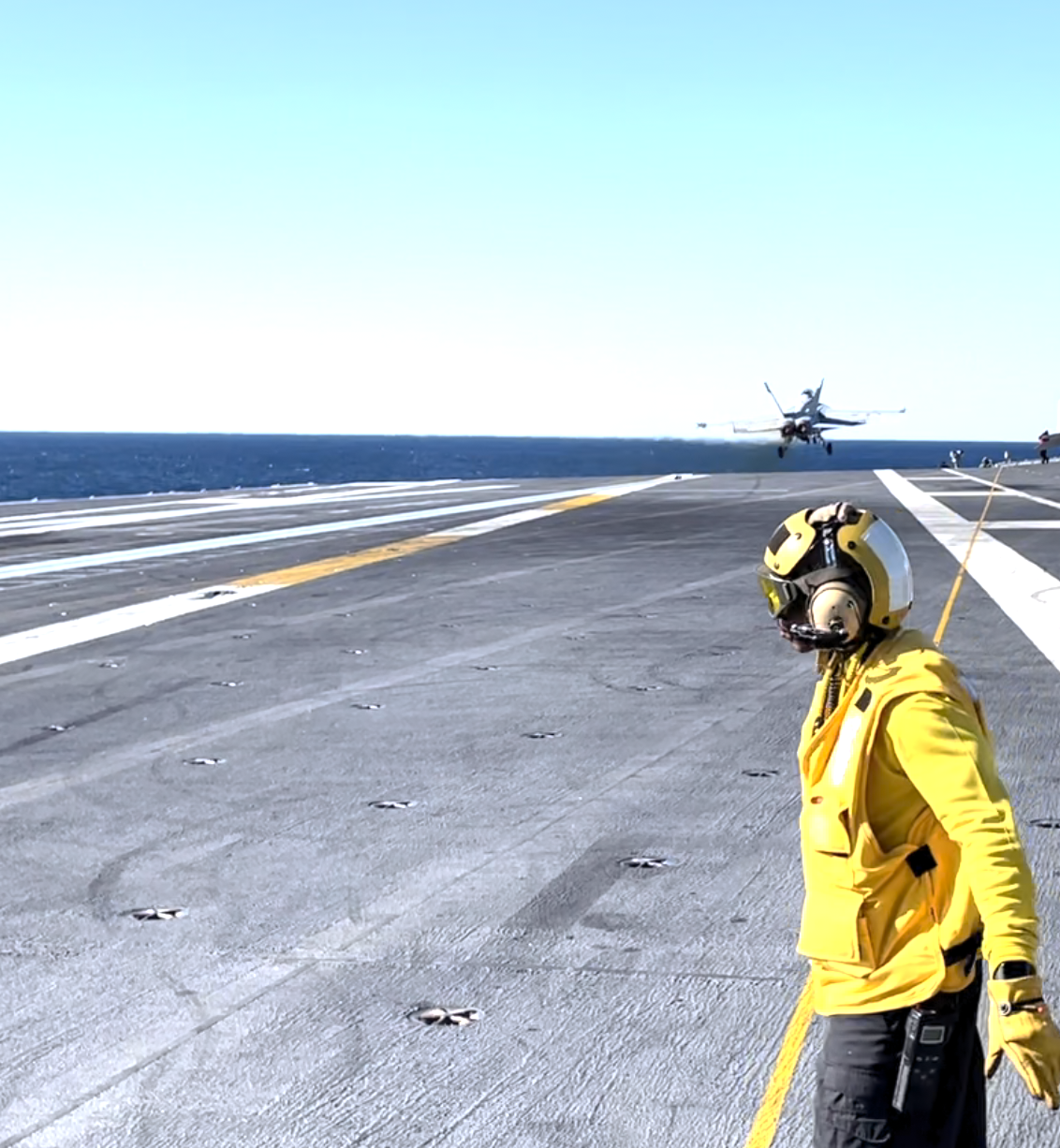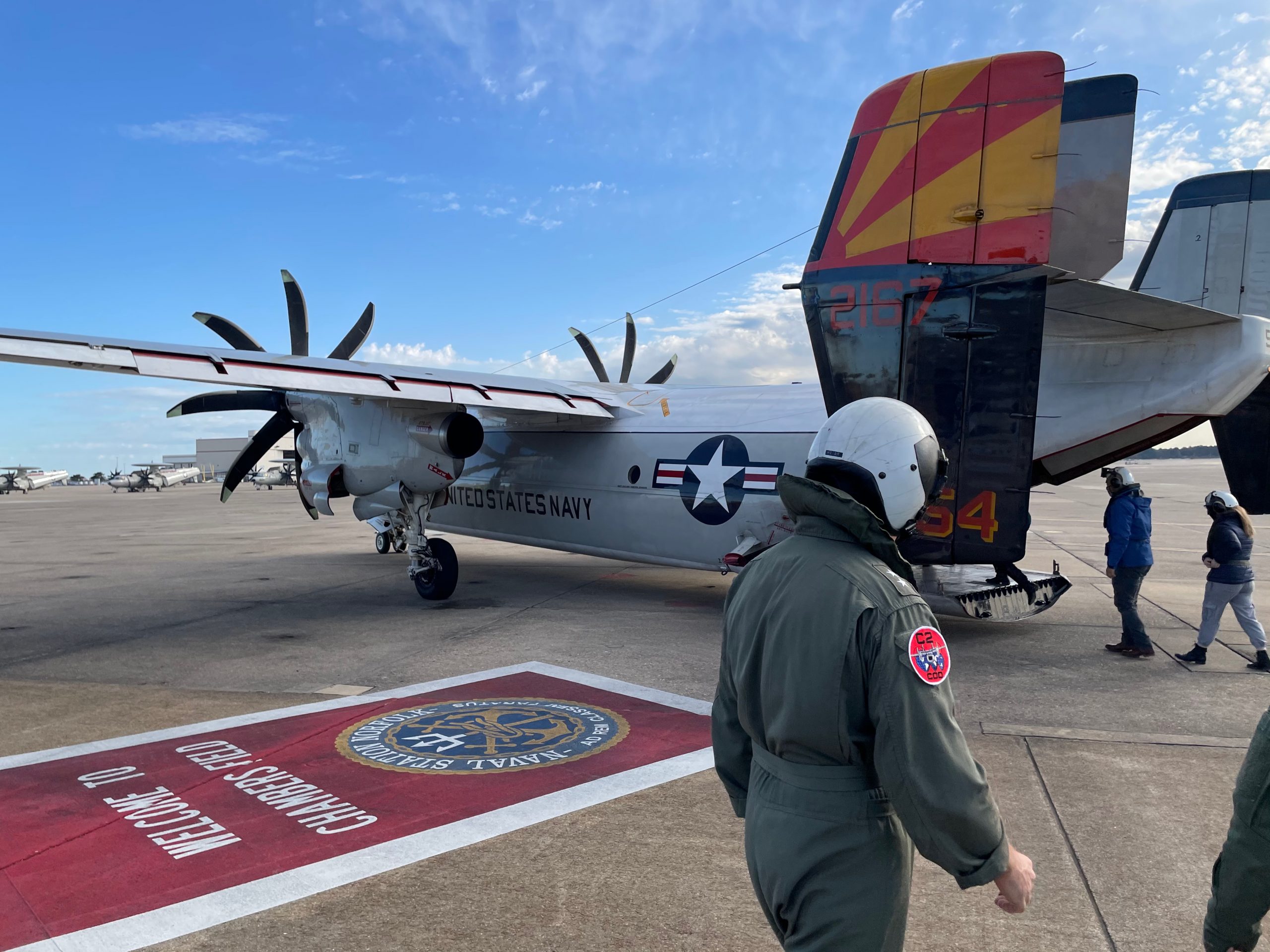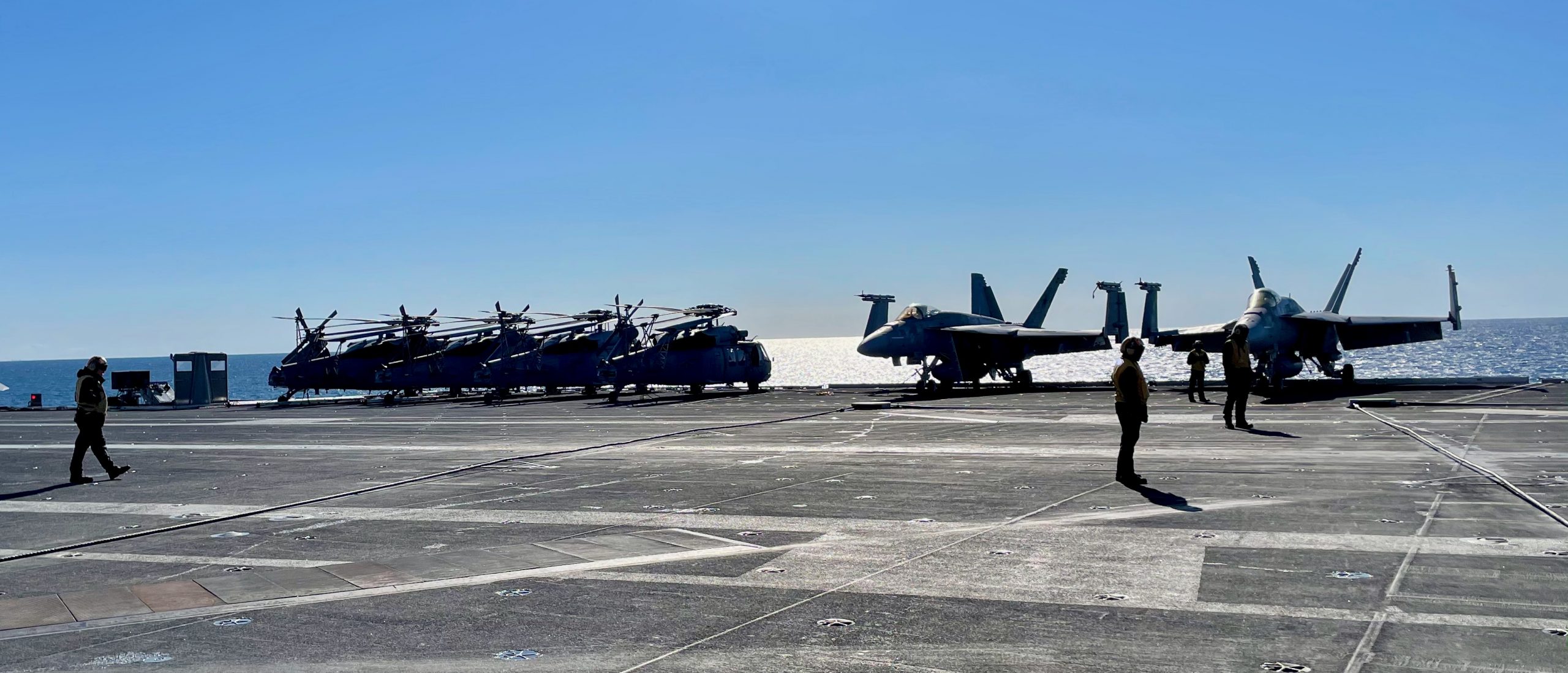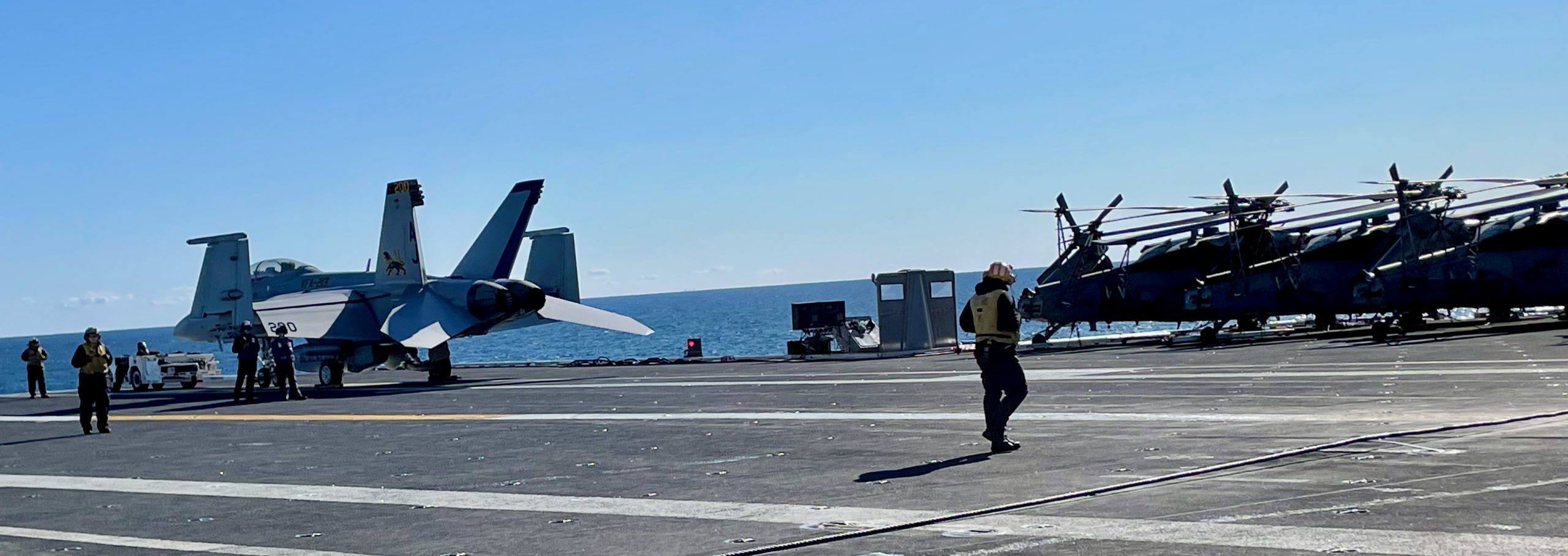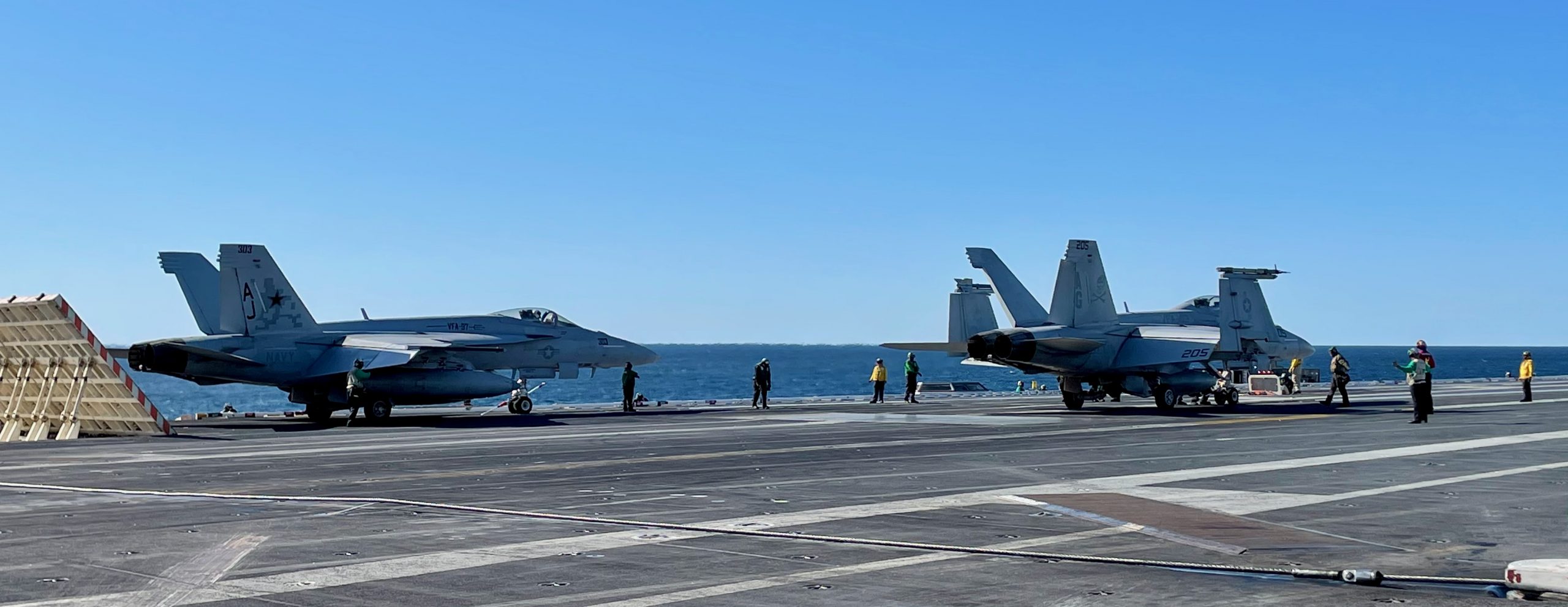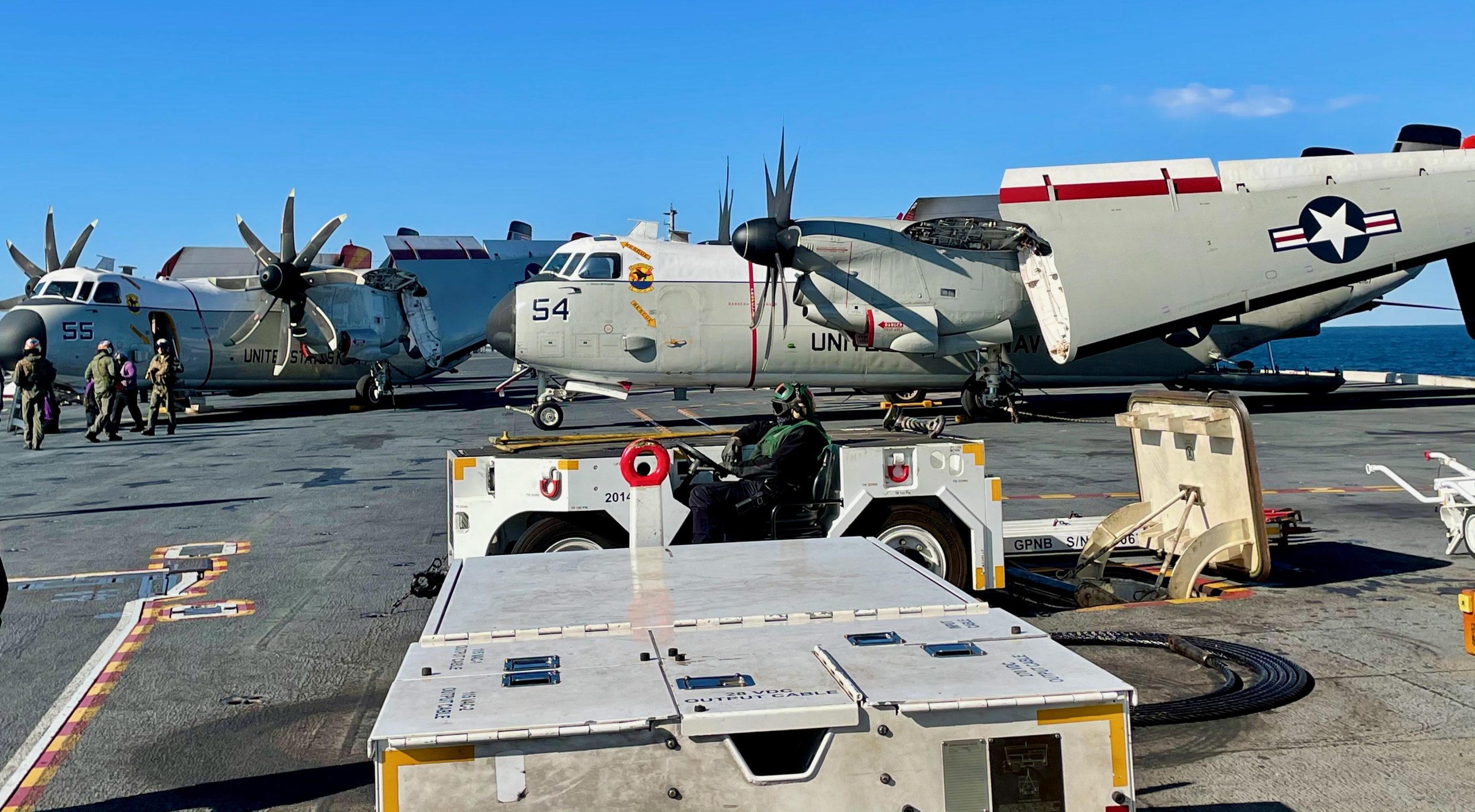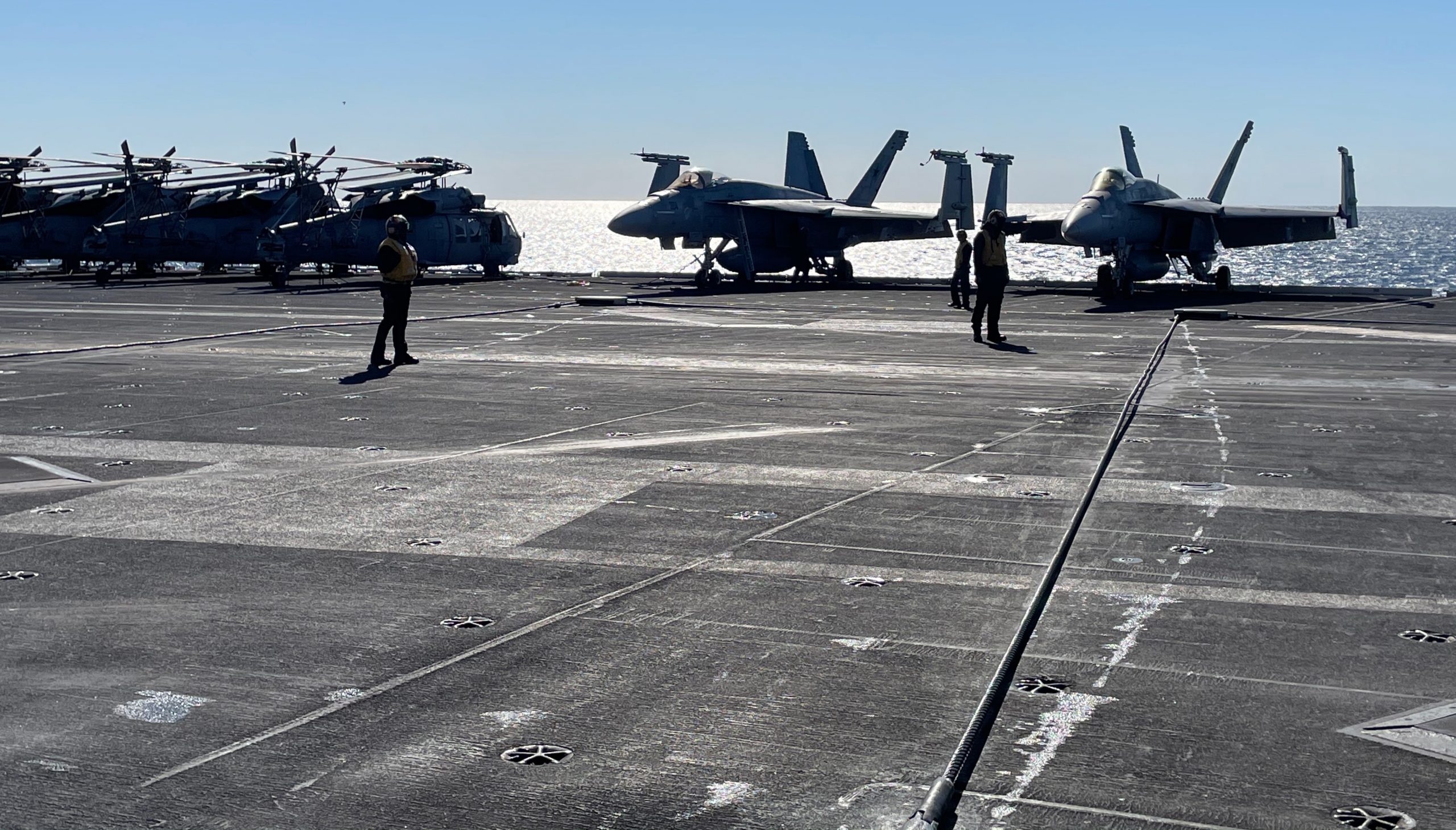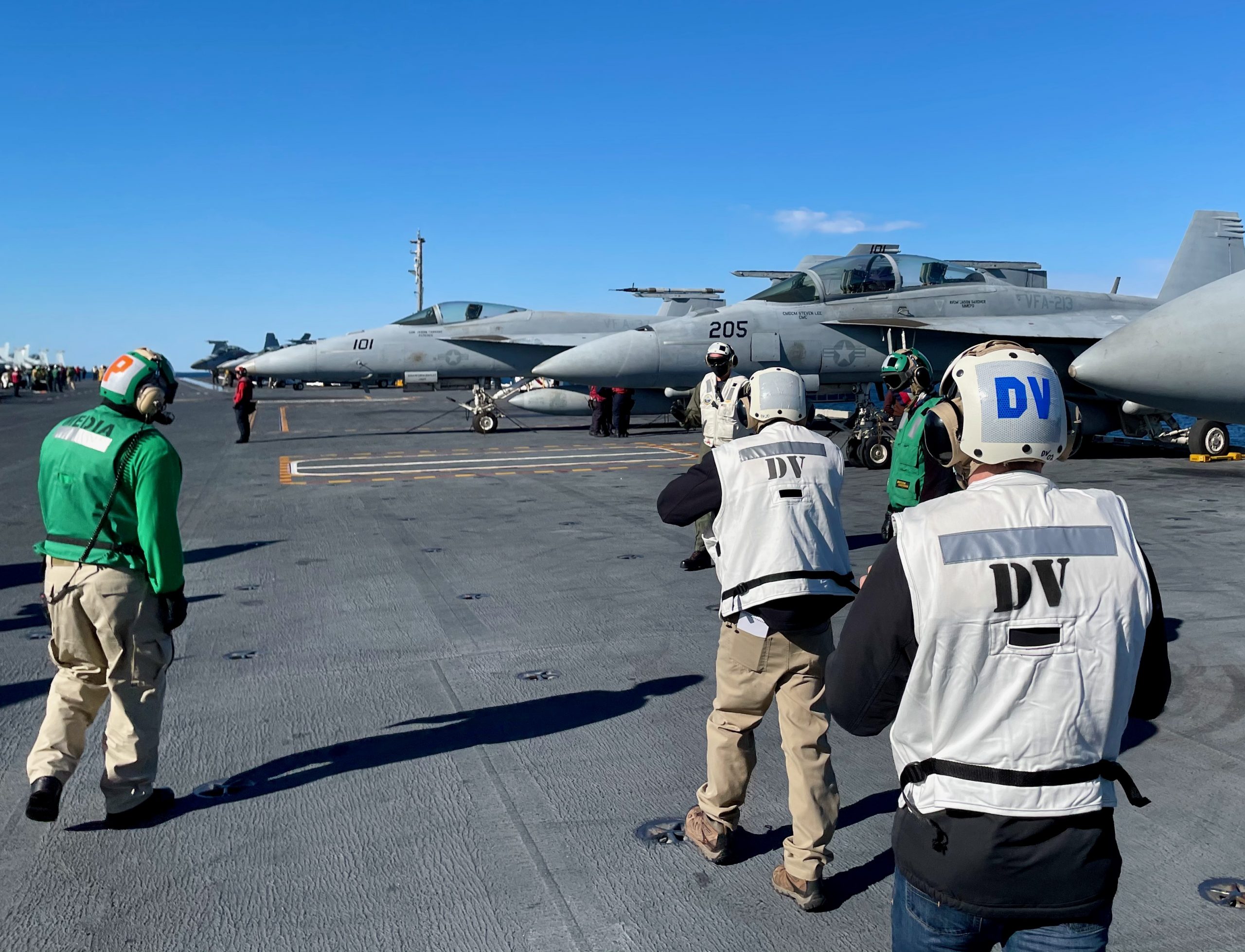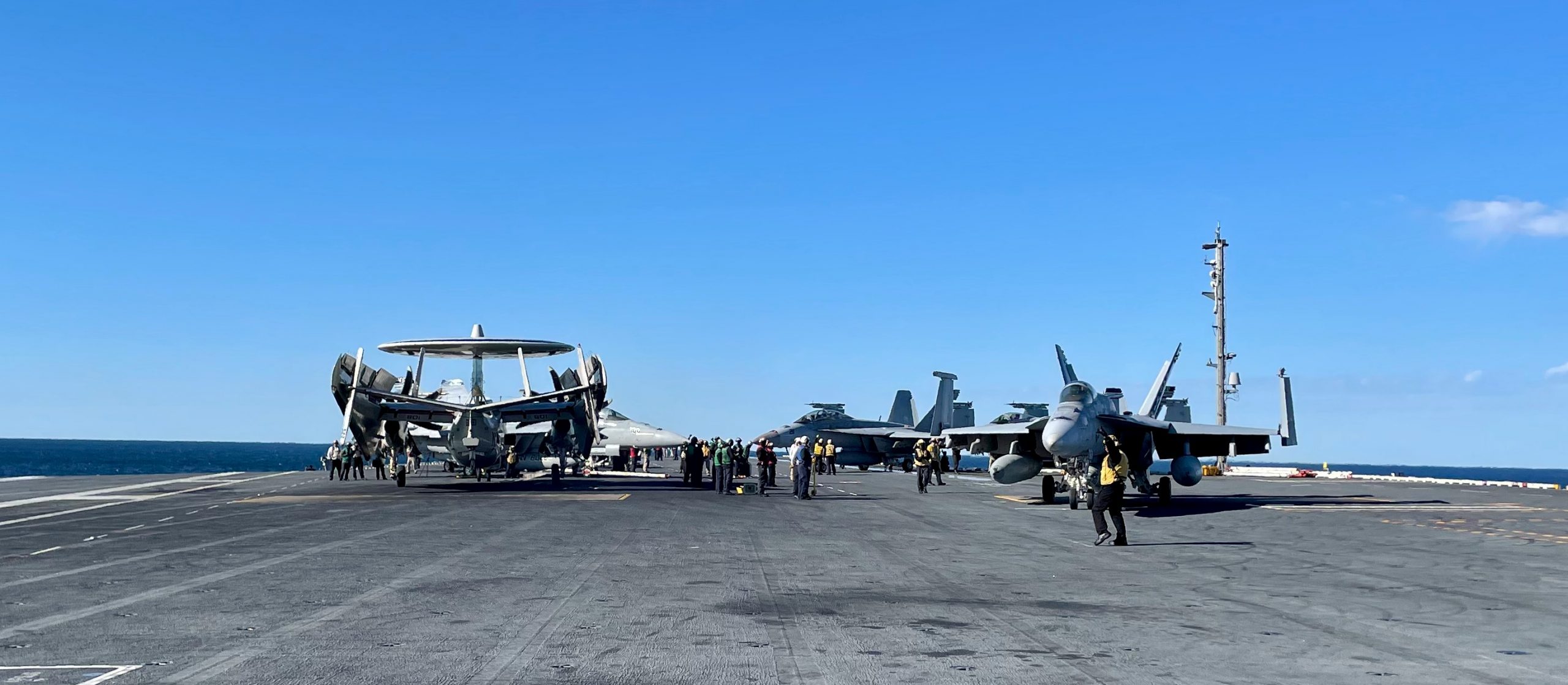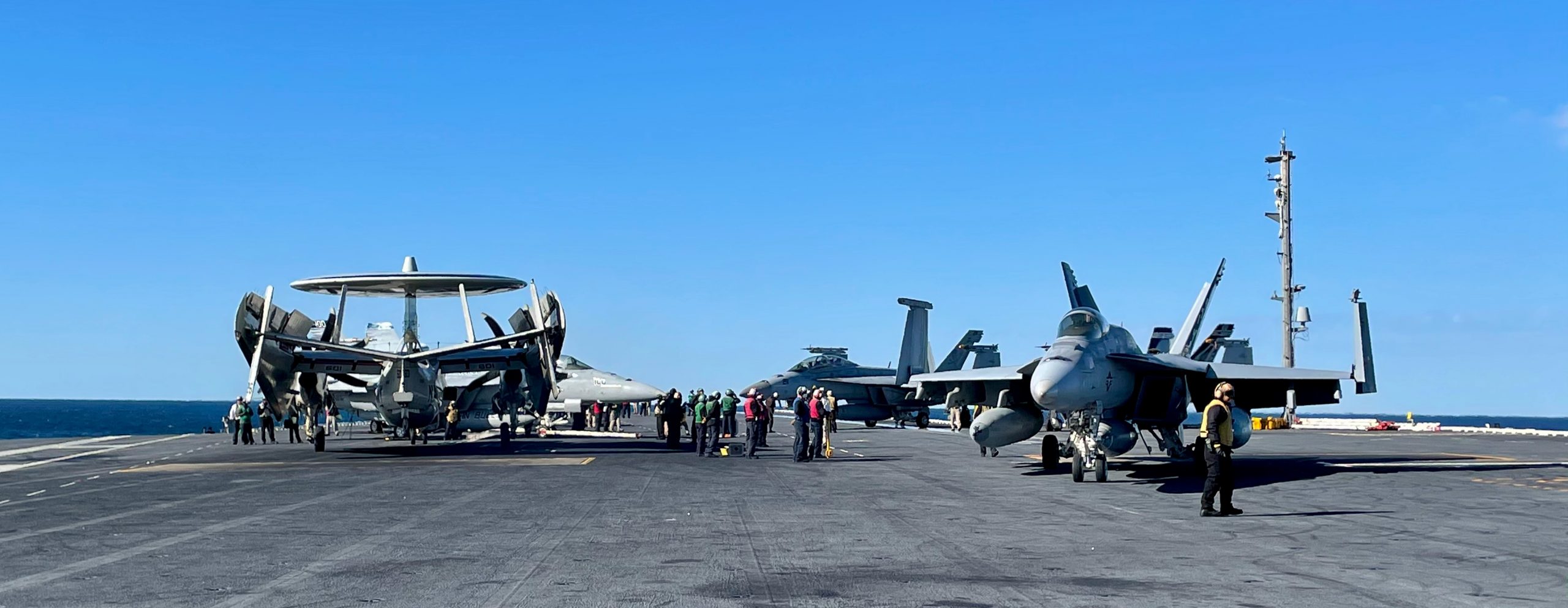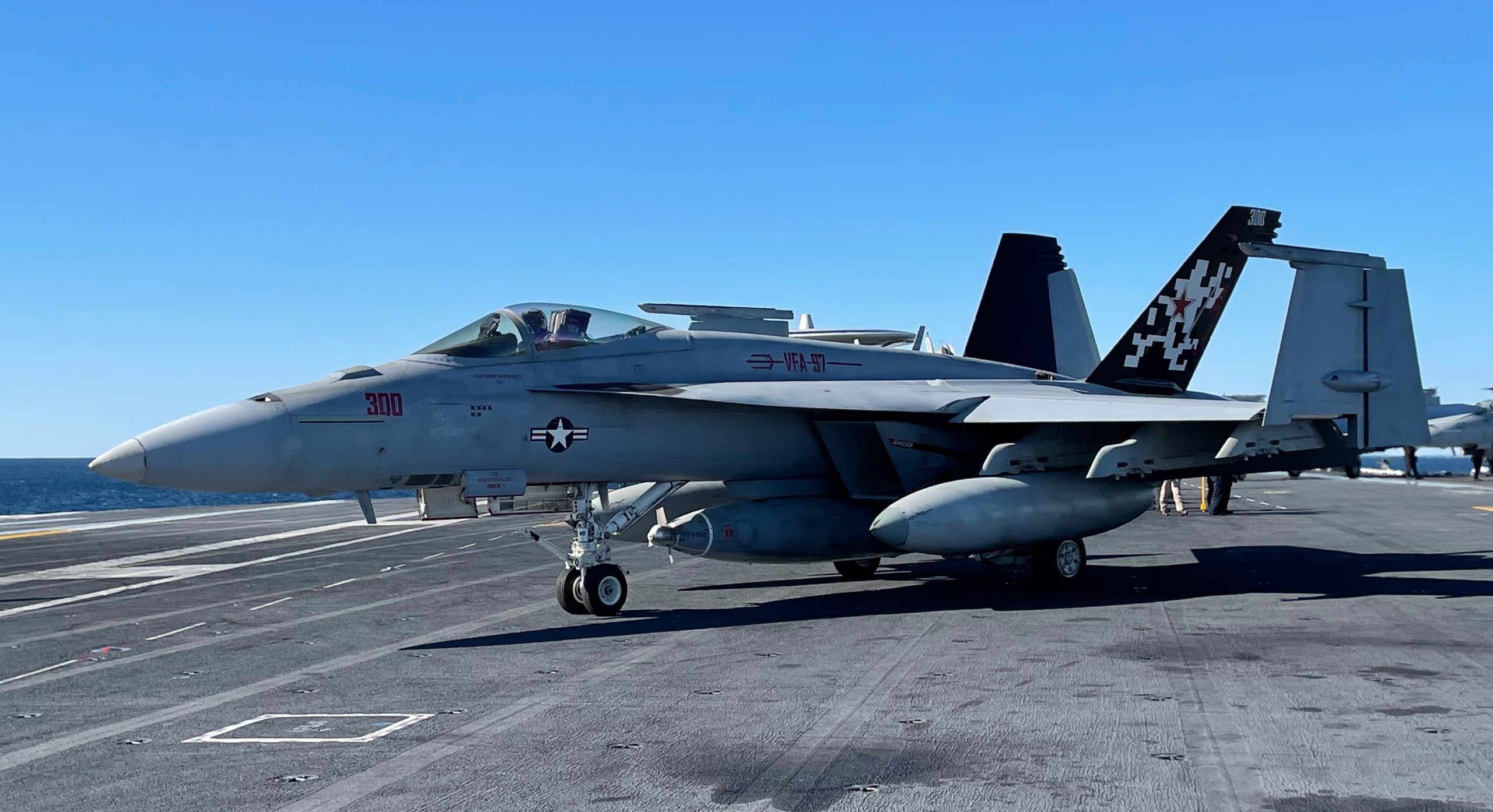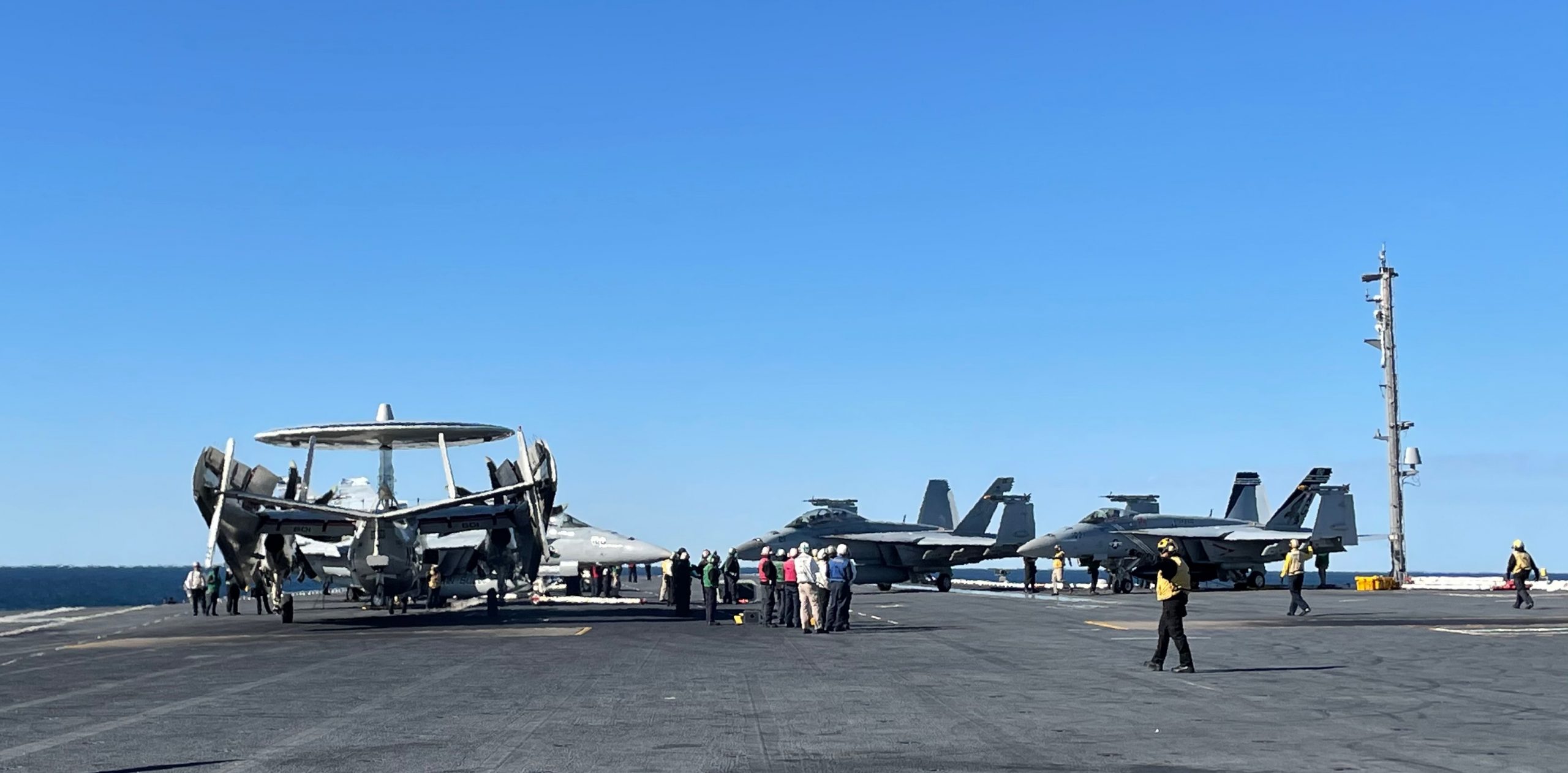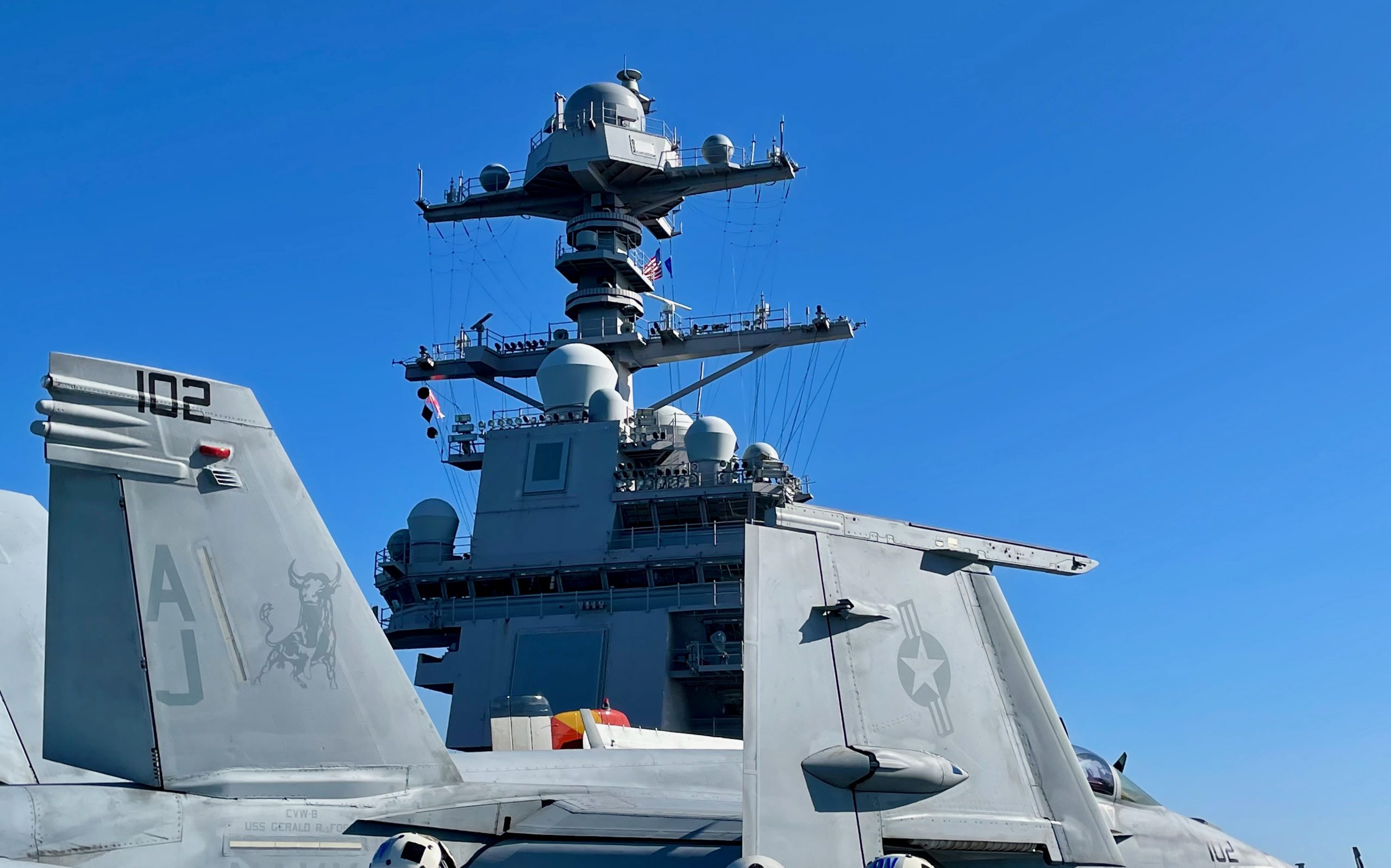By Robbin Laird
On November 17, 2020, a small number of journalists, most from the local Norfolk based media, flew from Norfolk Air Station to the USS Gerald R. Ford at sea, less than 100 miles off of the Virginia cost. We flew on the venerable C-2 Greyhound, but this was the first time I had done a carrier landing with the advanced arresting gear and the new EMALS launch gear engaged. It was clearly different. Notably, when we launched it was much smoother and much quicker than a steam catapult experience.
Last month, I had spent two days with the senior leadership of USS Gerald R. Ford and talked with many members of the crew. What I had a chance to see and discuss during that visit was the new combat architecture built into the ship which allows for a very different workflow than a Nimitz class carrier, which allows for significant advances in sortie generation rates, as well as new ways to manage the deck space in empowering air operations from the very formidable warship.
In a story released by the U.S. Navy on November 10, 2020, the Gerald R. Ford carrier strike group was noted as having commenced its first-ever integrated operations, and we were fortunate enough to be onboard the ship at sea while it was working its cyclic operations.
Under the leadership of Carrier Strike Group (CSG) 12, USS Gerald R. Ford (CVN 78) along with Carrier Air Wing (CVW) 8, Destroyer Squadron (DESRON) 2, CSG-12’s Air and Missile Defense Commander, Commanding Officer of USS Gettysburg (CG 64), and CSG-12’s Information Warfare Commander commenced first-ever fully integrated carrier strike group operations for the Ford-class carrier, Nov. 8.
Visiting the USS Gerald R. Ford, November 17, 2020 from SldInfo.com on Vimeo.
During independent steaming event (ISE) 13, CVW-8 will execute cyclic flight operations while CSG-12 oversees unit-level training, maritime strike exercises, an air defense exercise, and other larger force exercises.
“Recent underway periods have provided my staff and my warfare commanders a greater understanding of how Ford and Nimitz-classes are similar and how they are different, but this underway will enable us to learn how we will fight the Ford-class,” said Rear Adm. Craig Clapperton, commander, CSG-12. “This is another stepping stone to learn, synchronize, and coordinate with fleet stakeholders and mature our processes and capabilities to posture the ship and the strike group for success in their first workup and deployment cycle.”
While this is the first time the entire strike group has operated together, this past May elements of CVW-8 embarked Ford to complete critical milestones that prepared the air wing for this current scale of operations. They conducted cyclic flight operations with thousands of pounds of inert ordnance transported via Ford’s advanced weapons elevators to F/A-18 Super Hornets to be employed during close air support and air-to-ground training missions.
“It’s great to embark our air wing on the USS Gerald R. Ford once again,” said Capt. Josh Sager, commander, CVW-8. “This is an incredible opportunity to exercise air wing missions in a carrier strike group setting, and Team Factory conducted a significant regimen of unit-level training in preparations for this at-sea training period. We’re thrilled to continue our integration aboard the flagship of the Ford-lass of aircraft carriers.”
During ISE 13 DESRON-2 will focus on preparing the Gerald R. Ford Carrier Strike Group to defend against surface and subsurface threats using CVW-8 aircraft and ship’s self-defense.
According to Capt. Stefan Walch, DESRON-2’s deputy commodore, the command and control of long-range missile strikes against enemy warships, and the protection of assets in constrained waters are challenging missions that require both technical proficiency and solid unity of command.
“There is no substitute for underway, integrated operations with all of the various staffs that make up the strike group,” said Walch. “This underway will be a huge benefit to building the necessary command relationships and collaboration required to effectively execute our mission.”
There will be more on the visit in later articles, but wanted to highlight some of the photos in a series of photo albums.
This photo album highlights some of the shots made at the beginning of the day, as the launch and recovery cycles were being generated.


